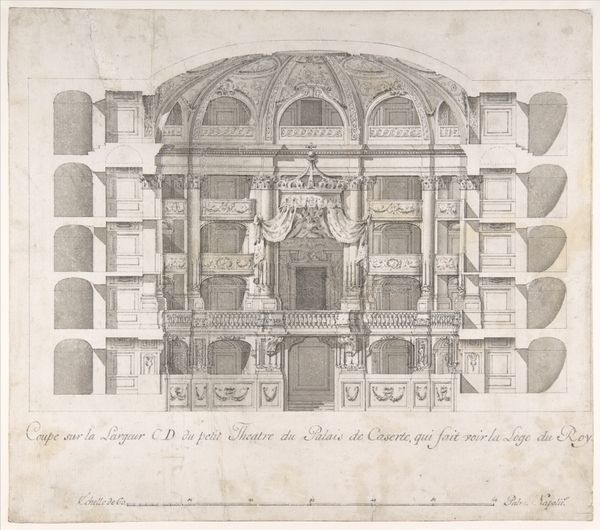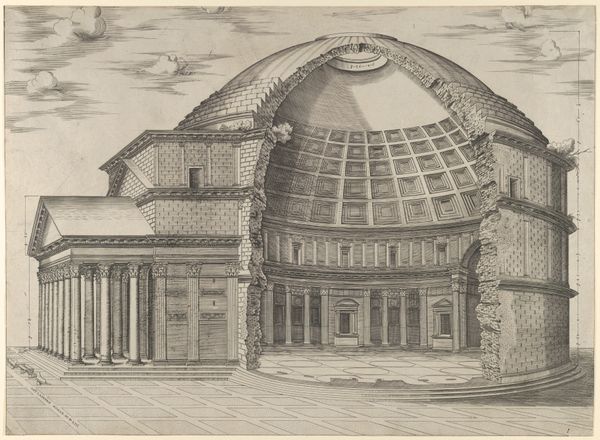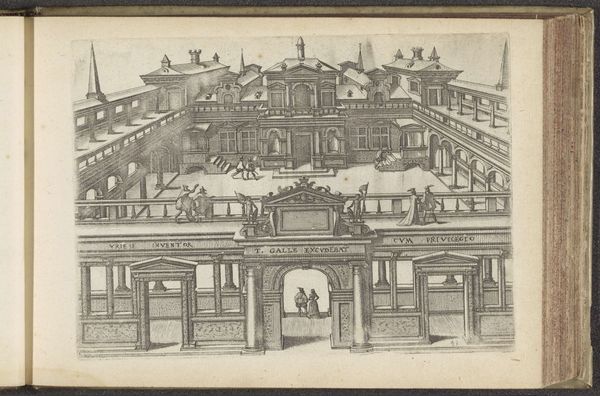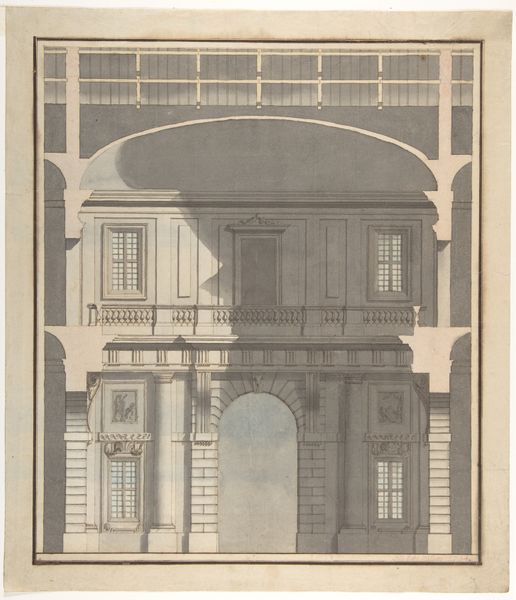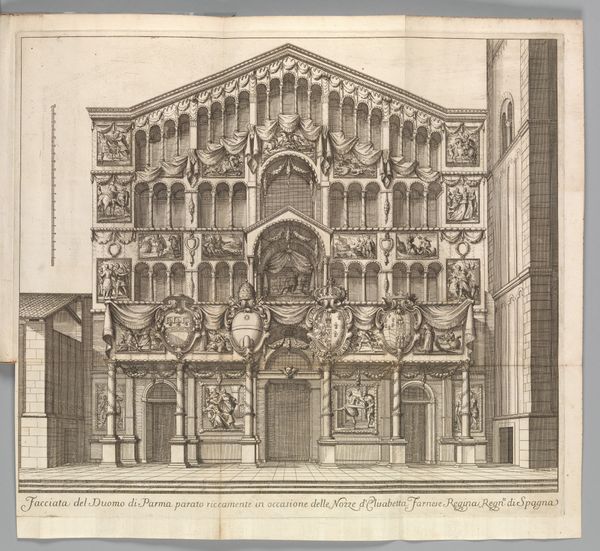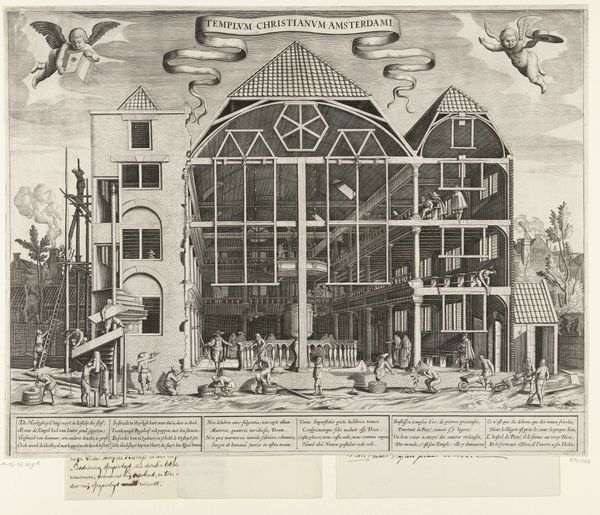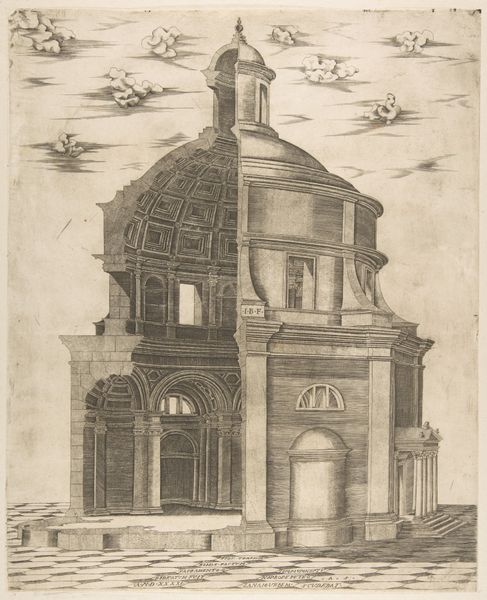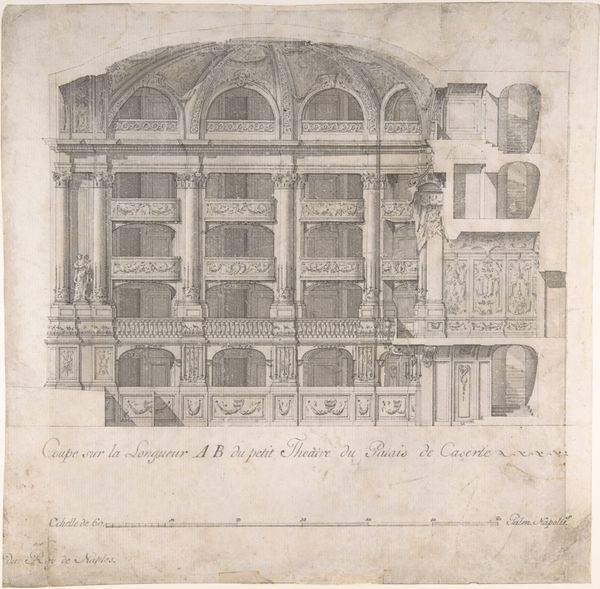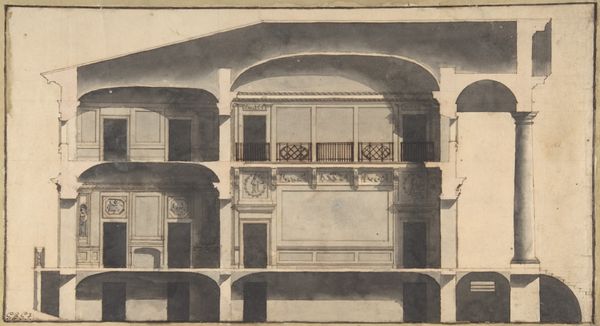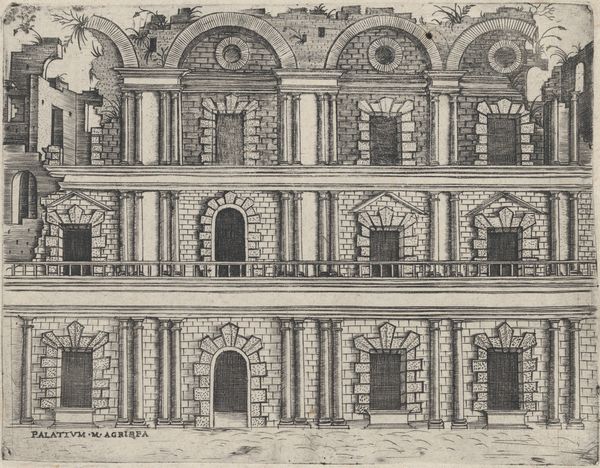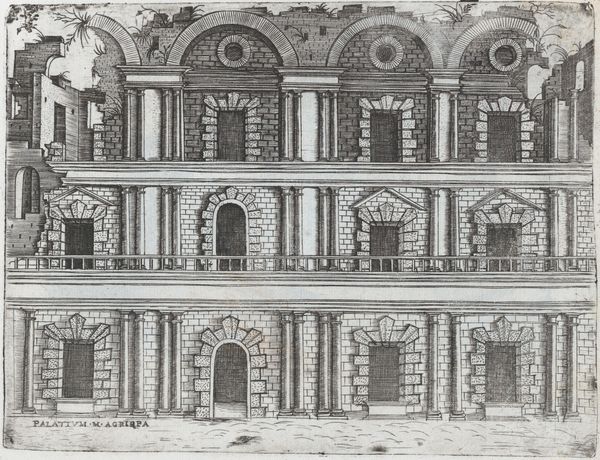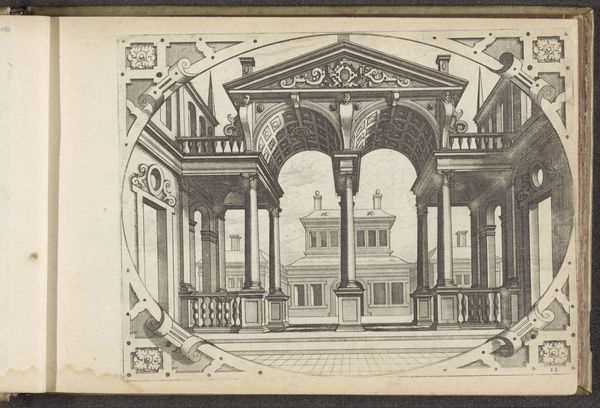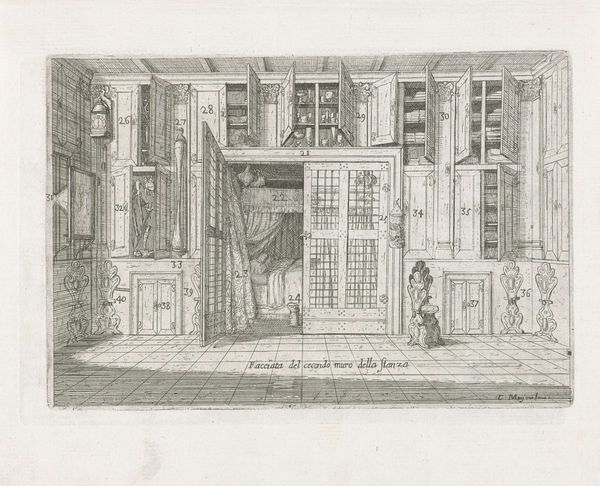
Speculum Romanae Magnificentiae: The Colosseum 1478 - 1562
0:00
0:00
drawing, print, engraving, architecture
#
drawing
# print
#
11_renaissance
#
geometric
#
italian-renaissance
#
engraving
#
architecture
Dimensions: sheet: 15 3/8 x 21 15/16 in. (39 x 55.8 cm) mount: 19 15/16 x 27 9/16 in. (50.6 x 70 cm)
Copyright: Public Domain
Curator: What a striking image of the Colosseum—a Renaissance print, actually, titled "Speculum Romanae Magnificentiae," dating from 1478 to 1562. Editor: There's an intriguing duality to this work. It’s both monumental and strangely fragile. The architectural precision clashes with the way the Colosseum seems to crumble at the edges. Curator: The title means "Mirror of Roman Magnificence," which suggests an intention to capture the grandeur of Rome, though the wear and tear you noted gives the artwork an emotional weight as well. Note the figure bearing text in the upper left. This engraving presents us not just with a building, but also a story about time. Editor: Indeed. The artist juxtaposes the solidity of classical form with an awareness of decay. Look at how the meticulous hatching defines the volumes, creating a tension between line and mass. The geometry here is palpable, but the effect is one of haunting nostalgia. Curator: Perhaps that angel is history itself, or Fame, come to remind viewers of Rome's former glory as expressed in both architecture and literature. Roman ruins often symbolize the cyclical nature of civilizations: their rise and fall. Editor: Absolutely. There is that symbolic weight, but on closer inspection, there are deliberate ruptures of the image, too. It's like a fragmented memory. How can such strong structural elements fail? Curator: It's precisely this interplay of the ideal and the real, the permanent and the transient that lends such works their depth. Each line etched here serves as a marker of not just what was, but what is becoming. Editor: This tension definitely adds complexity. It transforms what could have been a straightforward architectural study into a complex meditation. Curator: This is where our understanding of it lies—not in one answer, but in all its implications. Editor: Precisely; now that I see how each element of the piece comes together, it leaves me not with a sense of ruin, but perhaps an appreciation of time and human artistic accomplishment.
Comments
No comments
Be the first to comment and join the conversation on the ultimate creative platform.
